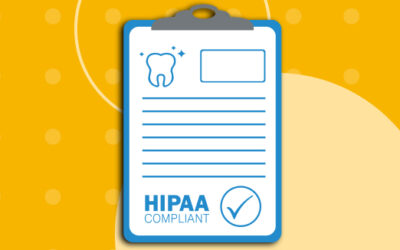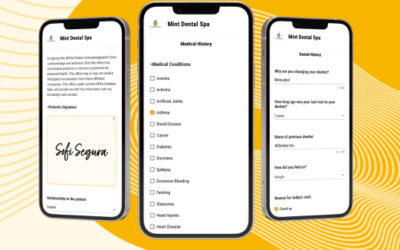
Traditionally, new patients filled out paper forms in the waiting room. Now, online forms are more common. However, sometimes, you have to intake a new patient over the phone. This may be because the patient has an emergency and needs to provide information immediately. A new patient may not be comfortable with online forms. Or, they may have a disability that makes it challenging to complete the forms online. In such cases, a shorter phone intake form can speed up calls. The question is what information should be gathered. This article explores different strategies for preparing and customizing your forms to ensure that they are faster and more effective for everyone involved.
Implementing Efficient Phone Intake
It’s tempting to just read through your typical new patient intake form over the phone, asking the same questions in the same order. However, tackling the new patient form over the phone as a guided discussion rather than just a job to complete tends to get better results. If possible, customize the questions to follow a conversational path.
Begin with patient identification details like full name, date of birth, address, and insurance. Obviously, just like a digital form, this information has to be correct and without mistakes, so getting it first and when energy is high is a good idea. Make sure your team knows the importance of taking your time and getting this right. Saving time is nice, but fixing errors is far slower in the long run. Make sure to ask any clarifying questions immediately while on the call to minimize incorrect data.
Next, gather emergency contact information such as the name and number of a close contact. This fortifies a safety net in case any urgent needs arise. Keep questions succinct but collect the necessary details.
Insurance details are key for rapid eligibility checks and claims processing. Capture the insurance provider name, member policy number, and group number if applicable. Also gather the primary insured member’s name and date of birth, which may differ from the patient’s.
Next, collect the relevant medical history including conditions, medications, allergies, and past procedures. Focus first on information pertinent to dental treatment like allergies and existing medication, but also capture any major medical events for a comprehensive view of the patient’s health.
Discuss dental health background like previous dental work, oral concerns, and the date of the last dental visit. This helps prioritize addressing any dental issues. Inquire about the reason for the patient’s visit and any particular symptoms or problems they are experiencing.
Finally, obtain verbal acknowledgment of the office’s privacy practice and consent to treatment. Ensuring agreements are captured during the call prevents redundancy later.
A concise new patient phone intake form optimized for conversational information gathering helps staff quickly collect these essential details. Additional industry resources like the ADA’s recommended intake script and guidelines for prospective patient calls provide useful frameworks to adapt. Customizing the dialogue flow using these resources helps minimize call times while capturing complete information.
Integrating Technology and Training
Leveraging technology and training staff enhances the phone intake process:
- Integrate phone form data into practice management software for a simplified digital workflow. Whenever possible, identify fields that can auto-populate to prevent duplicate data entry.
- Provide staff with scripts, guidelines, and call flow templates with question prompts as intake training resources (see ADA scripts here).
- Practice with your staff ahead of time, and role-play common scenarios like confused patients or complex medical histories. Develop skills for gracefully guiding conversations.
- Formalize data protection practices like secure record storage and encryption to safeguard patient details gathered during calls, and be prepared to explain those practices to your patients over the phone if they’re hesitant to answer personal questions on the call.
Yapi’s integration with practice management software allows you to use customizable intake forms. This makes it easy to collect patient information during phone calls that will sync automatically with your PMS. This, combined with robust training, ensures that your staff can build rapport with patients while quickly gathering all the necessary information.
Optimizing the Patient Experience and Streamlining for Impact
To enhance the patient experience and streamline the phone intake process, it is crucial to train staff on effective conversational techniques. By following best practices, you can ensure productivity and foster a positive experience for patients.
Best Practices for Phone Intake Conversations
- Introduce the purpose upfront: Start the conversation by clearly explaining the purpose of the call and what details will be collected. Help the patient understand the importance of providing these details for their upcoming visit.
- Adopt a warm and professional tone: Maintain a friendly and professional demeanor throughout the conversation. Ask questions in a conversational manner and actively listen to the patient’s responses. Ensure that the patient feels heard and understood.
- Clarify details and spellings: As the conversation progresses, seek to clarify any details or spellings of medications to minimize errors or incomplete information. This attention to detail is essential for accurate record keeping.
- Focus on immediate priorities: Begin by addressing immediate priorities such as dental concerns and insurance information. This allows the team to prepare for the patient’s visit promptly. Secondary details can be gathered later in the conversation.
- Detail the process: Spend time familiarizing new patients with what to expect. Explain the pre-visit process and the details required.
- Adapt questions based on patient responses: Each patient may have unique circumstances or complex conditions. Customize the conversation by adapting questions to capture a comprehensive understanding of their situation.
- Build rapport and set expectations: Take the time to address any concerns the patient may have and set clear expectations for their visit. This fosters trust and contributes to a positive experience.
By streamlining each call and ensuring meticulous accuracy, you can achieve significant time savings and establish a reputation for professional service delivery. Efficient intake directly impacts customer satisfaction and the overall success of your practice.
Faster and More Productive Calls
Remember, every call is a chance to show your patients they matter, that they’re more than just an entry in a database. It’s a chance to set the tone for the kind of personalized, attentive care your practice is proud to offer. By combining a better conversation with the efficiency of custom forms and synced integrations with your PMS, your practice can offer a patient experience that’s not just efficient, but also genuinely caring and responsive.



